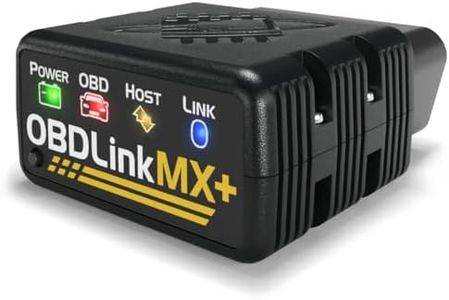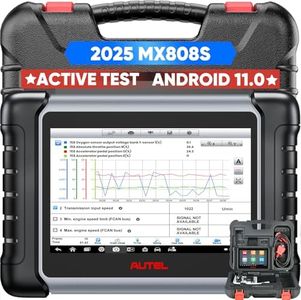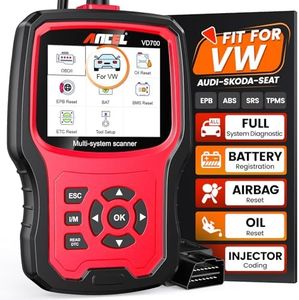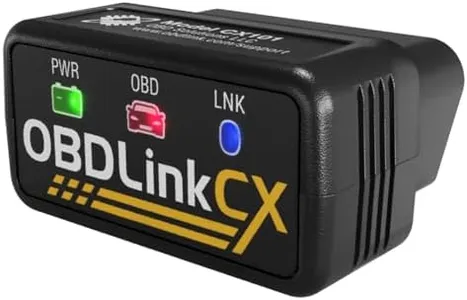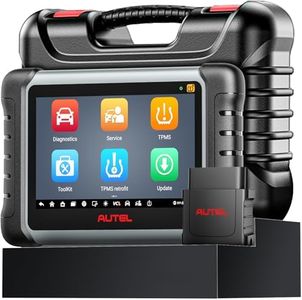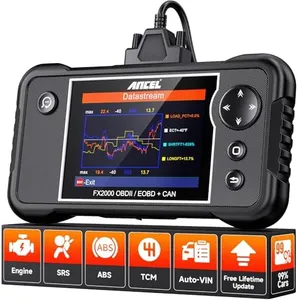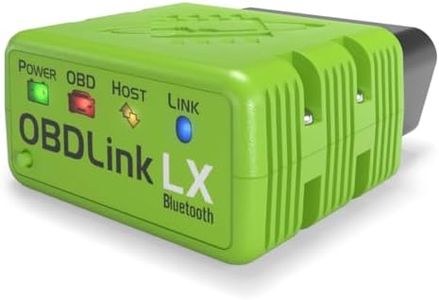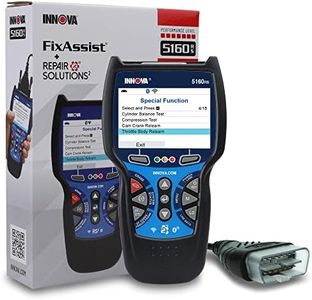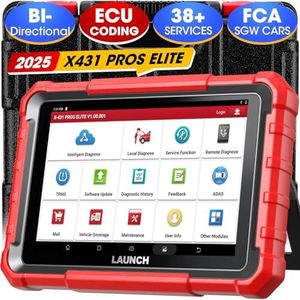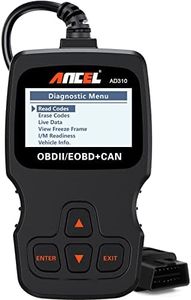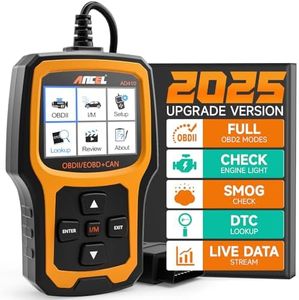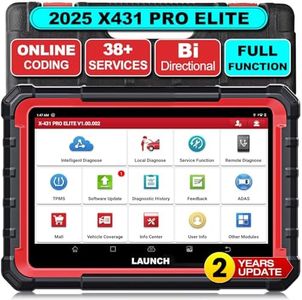We Use CookiesWe use cookies to enhance the security, performance,
functionality and for analytical and promotional activities. By continuing to browse this site you
are agreeing to our privacy policy
10 Best Automotive Scanners
From leading brands and best sellers available on the web.Buying Guide for the Best Automotive Scanners
Choosing an automotive scanner can feel overwhelming due to the many options available, but breaking down the key features can help you select the right one for your needs. The best scanner for you depends on the type of vehicle you have, what kind of information you want to access, and how much detail you need for diagnostics. Always consider what you want to do with the scanner: do you only want to read and clear simple error codes, or do you need more advanced features like live data, special functions, or compatibility with a range of vehicles?CompatibilityCompatibility refers to which vehicles a scanner can work with. This is important because scanners must communicate with your vehicle’s onboard computer system, and not all scanners work with every make or model. Some scanners are designed only for certain brands or regions (like American, European, or Asian vehicles), while others are considered 'universal' and work with almost any car that supports OBD2, which is a standard for cars built after a certain year. To pick the right compatibility, check your vehicle’s year, make, and model. If you work with different types of cars, a universal or multi-brand scanner with wide compatibility will be more useful.
OBD Standard SupportOBD, or On-Board Diagnostics, is the standard protocol used for reading vehicle data. There are different versions—most notably OBD1, used in older vehicles, and OBD2, which is standard in most cars manufactured from the mid-1990s onwards. The standard is important because it determines what information the scanner can read. If you have an older vehicle (usually pre-1996), ensure your scanner supports OBD1. For newer vehicles, OBD2 support is essential. Make sure the scanner matches your car’s protocol for accurate results.
Read/Erase Codes CapabilityThis refers to the scanner’s ability to read and clear diagnostic trouble codes (DTCs) from your vehicle’s computer. This is important because codes tell you what might be wrong with the car. Basic scanners can only read and erase codes from the engine, while more advanced models can access other systems like ABS, airbag, or transmission. If you just want to find out why your Check Engine light is on, a simple code reader may be enough. If you want more detailed information from other systems, look for an advanced scanner that can access those modules.
Live Data and Freeze Frame DataLive data means the scanner can show real-time information from your engine and sensors as the car is running, such as RPM, temperature, and oxygen sensor readings. Freeze frame data captures a snapshot of the system at the moment a fault occurred. These specs are important for identifying intermittent or complex issues that basic code-reading can’t uncover. For everyday users, live data can help in monitoring performance; for those doing deeper diagnostics or repairs, this feature is highly valuable.
Special FunctionsSpecial functions include abilities like oil light reset, battery registration, EPB reset, DPF regeneration, or even key programming. These are important for maintaining modern cars and can save trips to the mechanic. Not every user needs these functions, so choose based on what maintenance tasks you want to perform yourself. If you only need to clear codes, you might not need special functions, but if you want to take on more advanced repairs or maintenance at home, look for a scanner that offers these.
Display and InterfaceThe display and interface refer to how easy the scanner is to use and understand. Some scanners have bright screens and clear menus, while others rely on small displays or even need a smartphone app. A clear interface is important so you can quickly find and understand diagnosis results. If you value simplicity and want a straightforward experience, pick a device with a large, easy-to-read screen and intuitive controls.
UpdateabilityUpdateability determines whether the scanner’s software can be updated to support new vehicles or features in the future. This is important as car technology evolves and new diagnostic codes or systems emerge. Some scanners allow free updates, while others may require a fee. For long-term use, pick a scanner that offers regular and easy updates, especially if you plan to use it with newer or multiple car models over time.
